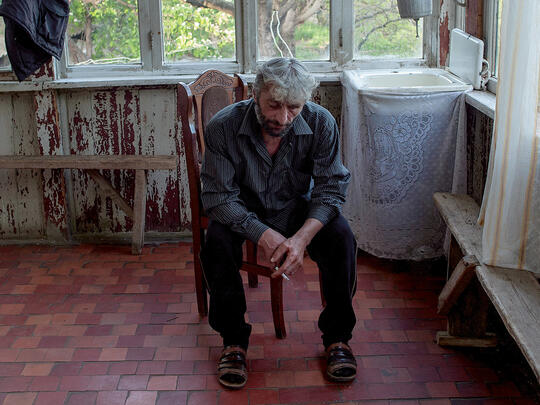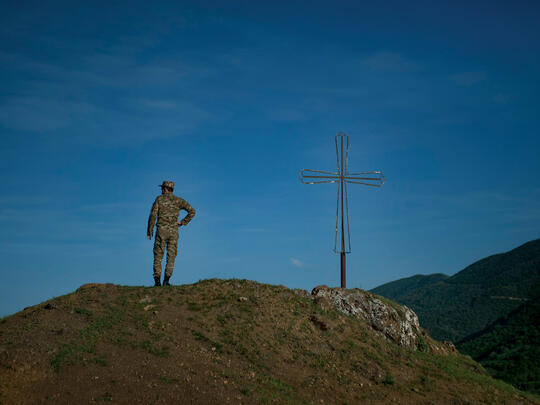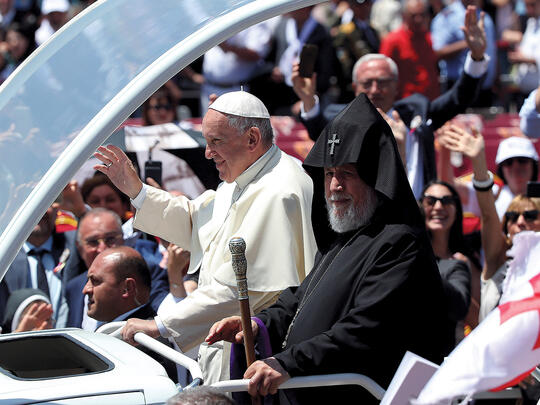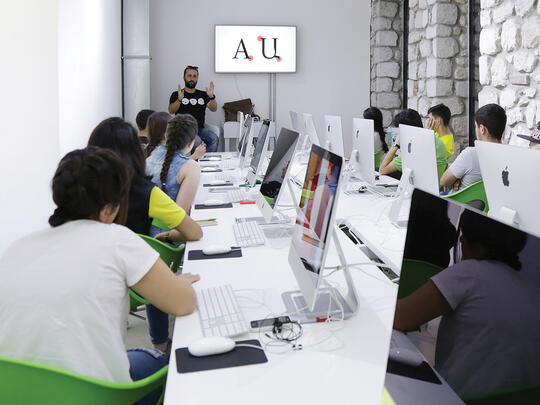For the fourth consecutive summer, the streets of the Armenian capital swelled with social unrest as thousands of Yerevan residents voiced their discontent over the country’s political leadership. Unlike the public outcry in previous years over the increased cost of public transportation, pension reform and electricity rate hikes, the nature of this summer’s protest was dramatically different. The stakes were higher, the demands more desperate and the response more heavy-handed. When it was all over, Armenian President Serzh Sargsyan conceded that mistakes had been made and acknowledged the need to expedite democratic reforms. He emphasized that Armenia’s problems “will not be solved through violence or arms.”
The catalyst for the July demonstrations was the deadly storming of a police station in the Erebuni district of Yerevan by an armed militant group calling for the overthrow of the government. One police officer was killed and several others wounded in the initial assault, sparking a tense stand-off as the gunmen demanded the release of their jailed leader in exchange for the police officers and ambulance medics they were holding hostage inside the police compound.
Calling themselves the Daredevils of Sassoun, the militants included a number of veterans of the 1988-1994 Nagorno-Karabakh war. They are viewed as national heroes by their supporters who want the government to take a harder line in the protracted conflict with Azerbaijan. The group is also linked to the radical opposition movement Founding Parliament whose leader, Zhirayr Sefilian, was arrested in June on weapons charges and suspicion of plotting a coup.
On July 23 the gunmen released the last of the hostages but remained barricaded inside the police compound. Within days, they had become a rallying point for wider public dissatisfaction with the government as several thousand people joined nightly protests to support the militant group. Underlying the public sense of frustration with the government was speculation that Russia is pressuring Yerevan to trade land for peace in Nagorno-Karabakh.
On July 29, as the nightly protests expanded, riot police strung large coils of barbed wire across Baghramyan Avenue, blocking people from approaching the main government building and the presidential residence. With increasingly excessive force, police clashed with protesters as they dispersed the crowds. Dozens of peaceful protesters and journalists covering the demonstrations were wounded including some who were left with severe injuries. Lragir.am news cameraman Marut Vanyan told Human Rights Watch that despite showing police his press badge, a group of unidentified men dragged him behind the police line and beat him with wooden clubs in the arms, back and legs. “That night felt like a deliberate attack on journalists,” he recounted.
Facing increasing pressure from tactical police units, the gunmen laid down their weapons the next day and surrendered to law enforcement authorities, vowing to continue their struggle as political prisoners. Armenia’s Special Investigative Service launched an inquiry into police actions on the night of July 29. During a meeting on August 1 to address the situation, President Sargsyan apologized to the journalists and pledged “the disastrous tendency to solve problems through violence must be eradicated.”
The groundswell of support for the radical opposition movement revealed the extent of distrust, disenfranchisement and dissatisfaction by many Armenians who perceive that despite progress the country’s wealth and political power are still concentrated in the hands of a few. As Armenia continues to strengthen the pillars of its democracy, this summer’s protests are a stark reminder of the long and challenging road that lies ahead.
Photo by Hayk Baghdasaryan















